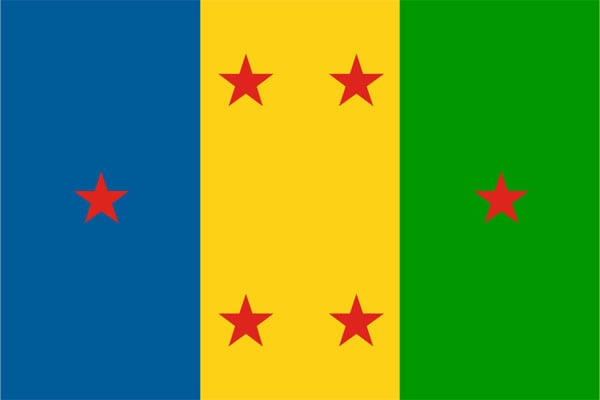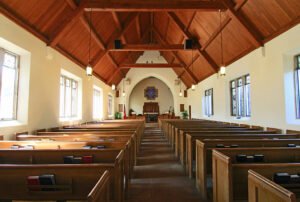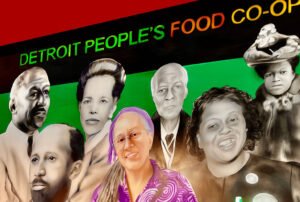
Editor’s note: In the early 1990s, the tale of the Ogoni people—who had seen the Nigerian military government, backed by the oil giant Shell, drive them off the land— became a cause célèbre. In 1995, Ken Saro Wiwa and eight other Ogoni activists were executed, framed for inciting violence. Ultimately, in 2009, Shell, while refusing to admit guilt, paid $15.5 million into a settlement fund. Today, the military government is long gone, but conditions for the Ogoni remain poor. Part of the reason, suggests Nigerian researcher Mina Ogbanga, is that basic precepts of “bottom-up” community building, while widely accepted in theory, are only rarely implemented in practice.
Since democracy’s return to Nigeria in 1999, the role of nonprofits in Nigeria has grown in importance, as it has in many nations. But the community’s voice is still often missing in action. This is true even as, rhetorically, “community participation” has become a sort of mantra in the wake of the Brundtland Commission report Our Common Future, which popularized the term “sustainability.”
In the 1990s, community-based development became known as a robust tool for grassroots mobilization (Narayan, 1995; Uphoff,1996; Korten,1990). Yet top-down approaches continue to dominate in the nongovernmental organization (NGO) world. The Niger Delta region, a coastal oil-producing area in South Nigeria, is an example of this. In the Niger Delta, there are successes, but inclusiveness often is lacking. In particular, efforts have often failed to fully tap the potential and creativity of Nigeria’s youth.
The Niger Delta consists of nine states (see Table 1 below). It covers a land area of about 43,285 square miles, with an estimated population of more than 30 million people as of 2005. The region accounts for more than 23 percent of Nigeria’s total population (NDDC, 2006). The people of the region are predominantly farmers in the upland and fishermen in the riverine area.
Since 1956, when crude oil was discovered in commercial quantity in the region, the area has faced massive environmental pollution, including gas flaring, acid rain, and black soot. Gains from extraction have also been highly unevenly distributed, gravely impacting development of the region (Amadi, et al., 2016; UNDP, 2006).
Table 1. States of the Niger Delta, Land Area, Population, and Capital City
| State | Land Area (sq.km.) | Population (projected to 2005) |
Capital City |
| Abia | 4,877 | 3,230,000 | Umuahia |
| Akwa Ibom | 6,806 | 3,343,000 | Uyo |
| Bayelsa | 11,007 | 1,710,000 | Yenagoa |
| Cross River | 21,930 | 2,736,000 | Calabar |
| Delta | 17,163 | 3,594,000 | Asaba |
| Edo | 19,698 | 3,018,000 | Benin |
| Imo | 5,165 | 3,342,000 | Owerri |
| Ondo | 15,086 | 3,025,000 | Akure |
| Rivers | 10,378 | 4,858,000 | Port Harcourt |
| Totals: | 112,100 | 28,856,000 |
Source: GTZ baseline projection based on 1991 census & NDRDMP. Demography and Baseline sectors study; Agriculture and Rural development sector study.
Uncovering the facts on the ground
To get a clearer sense of the particulars, a research team in which I participated collected data from a broad range of cases. To begin, we identified a total of 262 nonprofit organizations. Over 18 months, a total of 679 households were randomly selected and surveyed.
The surveys sought to identify the level of community participation and how nonprofits might better stimulate community participation. Following the use of the survey instrument, in-depth, follow-up structured interviews took place from July to December 2017. The data was collected at the individual, household, and community levels.
Each community and their level of participation, including ownership, was measured through direct oral interviews and participant observation of randomly selected respondents. In each community, additional data was collected through focus group discussion.
As noted above, community participation has been central to recent scholarship in sustainable community development (Korten, 1990). Despite its ubiquity, however, the concept of participatory development has often been vague in specifying ways to effectively empower community members in development projects (Bass, 1993).
Analysis of nonprofit interventions in the Niger Delta
In the Niger Delta, nonprofits are involved in many areas, including the supply of potable water and low-cost housing units. Nonprofits operating in the region include Stakeholders Democracy Network (SDN), Dawn in the Creeks (DITC), Foundation for Environmental Rights Advocacy & Development (FENRAD), Community Initiative for Enhanced Peace and Development (CIEPD), O.B Lulu-Briggs Foundation, and the Environmental Friendly Initiative (EFI), among others.
The ways in which communities themselves foster sustainable development have not been adequately studied in most poor societies. Communities acting on the ground, of course, often must balance competing environmental, economic, and social equity demands.
In the Niger Delta, ecological and socioeconomic unsustainability have endangered the lives of the rural poor, many of whose livelihoods derive from the natural environment (Amadi & Anokwuru, 2017). Contrary to the mainstream notion that crude oil from the region—which has been the mainstay of Nigeria’s economy since the 1970s—will empower the people and alleviate poverty, the reality has been continued impoverishment and environmental degradation (UNEP, 2011).
UNDP (2006) captured this failure to meet people’s needs through its human development index, which compares the Niger Delta with similar oil-rich developing societies. The report found that governance failure and negligence account for widespread environmental degradation. Indeed, the Niger Delta economy, by and large, has been characterized by a rent-seeking economy, resource wars, environmental degradation, pollution, acid rain, gas flaring, and youth unemployment.
Among the Ogoni (an ethnic group in the region), pollution of the natural environment has negatively impacted their rural livelihoods. The Niger Delta may be the economic hub of Nigeria, but the economy of the region as a whole is in a downward spiral, with a high unemployment rate.
In general, this situation of poverty amidst plenty helps explain youth restiveness, hostage-taking, vandalization of oil pipelines, and the proliferation of small arms and light weapons (SALWs). In addition, the region has seen a rise in local conflicts. These have not only slowed down economic growth but have also heightened social inequality—holding back efforts to promote accountability, inclusive economic growth, and sustainable development.
To date, community participation has often been lacking. In 2017, youth identified a number of these challenges in the focus group discussions our group conducted. Among the identified challenges are a rise in insecurity, kidnapping, a lack of critical infrastructure to stimulate development, a high level of unemployment, a lack of guarantees for human rights, a lack of development of aptitudes and skills, a lack of vocational educational facilities in the region, and corruption and mismanagement of funds by some agencies in the region, such as the Niger Delta Development Commission (NDDC) and the Ministry of Niger Delta Affairs. On his 2017 visit to the Ogoni region, UNDP Resident Representative Edward Kallon observed that there is an urgent need for rural development in Ogoniland. This and several other accounts suggest that NGO intervention in the Niger Delta has often been ineffective.
Other key factors limiting participation include the impact of environmental degradation. Environmental damage results in lost livelihoods, which increases unemployment and poverty. There is also a lack of coordination among the various levels of government. Moreover, donors, local government, and nonprofit interventions are rarely reflected in the planning framework.
Duplication of nonprofit efforts can make this worse. Community apathy and a lack of participation are common, as residents often fail to see their priorities reflected. Many interventions, rather being driven by community need, are instead the product of politicians seeking political support.
One additional factor limiting participation is a lack of community monitoring and evaluation, which makes it hard for the community to know if nonprofit inventions really are making a positive difference in their lives. In several instances, poor record systems and the lack of data undermine effective community participation. Computer technology could help residents create a database to monitor and evaluate efforts, but, to do so, widespread computer illiteracy would also need to be overcome.
Recommendations: Toward a sustainable participatory model
In Nigeria, as in much of the developing world, the role of nonprofits is growing. But community participation in co-designing nonprofit interventions is often lacking. There are a number of ways to change this. For development to be effective, community involvement in decision-making and opportunities for community volunteering are critical. Greater community participation could greatly assist the nonprofit sector, community planners, development experts, and policymakers to better identify and meet the needs of residents. It all starts with involving residents directly in the work.
In April 2017, stakeholders participated in a two-day consultative engagement for “sustainable development of the Niger Delta region” held at Oke-Ikpe in Ukwa West. Participants demanded that efforts “consciously strengthen community-based institutions such as the traditional rulers’ council, community development council, youths and women groups, cooperative societies and related institutions.” The aim, in short, is to institutionalize sustainability.
Sign up for our free newsletters
Subscribe to NPQ's newsletters to have our top stories delivered directly to your inbox.
By signing up, you agree to our privacy policy and terms of use, and to receive messages from NPQ and our partners.
A lack of coordination among government agencies and levels has contributed to weak institutional capacity. Sustainable participatory development requires providing ongoing support to rural areas, such as villages, communities, and various grassroots associations. This includes involving these groups in grassroots-level planning and action. Participation, to be sustainable, needs to aim at horizontal integration, which includes the collaboration of various spheres of the local government, individuals, associations, and groups, irrespective of gender or social status.
In short, making participatory community development work is central to achieving better outcomes. Many international nonprofits lack in-depth knowledge of the rural Niger Delta, harming their overall effectiveness. Participatory development planning activities, like the ones proposed here, offer the promise of better outcomes because they directly engage community members in learning and understanding the issues that most directly affect them.
The volatile nature of the region with diverse ethnolinguistic groups requires the institutionalization of a participatory development agenda through grassroots mobilization and awareness building. This inclusive homegrown model is pro-people and pro-poor. It involves a bottom-up structure. The proposed process ensures involvement and empowerment of local residents and reduces the influence of existing social stratification in the community. Such rural intervention prioritizes key issues such as understanding the existential realities of the people, involving residents in high-level meetings, and including residents in making decisions on issues that directly affect them.
The overall characteristics of the participatory community development model suggests that:
- local people should be directly involved in decisions affecting them including local resource control,
- the local communities should be aware of the basis of intervention, its objectives, priorities, core stakeholders, rules and procedures, and
- local residents should implement and coordinate post-intervention action plans.
Implementing these tenets would make nonprofit interventions both more effective and more sustainable. Information should also be made available to residents to ensure inclusive community participation, including periodic community assessment of success stories to identify strengths and weaknesses of efforts under way and offering residents a chance to make appropriate adjustments.
A comprehensive community-based approach would combine different mechanisms, such as focus group discussions, town hall meetings, dialogue, and networking. This would help to provide a more equal playing field for dialogue, and help mitigate gender, racial, ethnic and class inequality and similar bias. Importantly, this approach will aid the community to institutionalize and own local development initiatives, thereby enhancing sustainability.
Capacity building and enhanced participation of communities in development is also critical. A common ground for participation can be achieved through such means as (i) inclusive rural sensitization; (ii) efficient utilization of local resources, both human and material; and (iii) adoption of equitable strategies in which women and their contributions are valued. The use of “voice aggregation” modeling can help ensure that the voice of the poor is heard (Narayan Chambers, Shah, & Petesch, 2000). This method has been successfully used to empower communities to make contributions on issues affecting them.
Conclusion
A number of lessons from nonprofit interventions in the Niger Delta region suggest that the region’s failure to meet participatory community development standards accounts for many nonprofit development failures.
In Latin America, Africa and parts of Asia, the surge in nonprofit intervention in the past decades is obvious, but the results have often been less than impressive. The key to changing this is to make the participatory development model, so dominant in theory, equally dominant in practice. The Niger Delta has yet to achieve this level of participatory development, but it may now be poised to do so.
References
Amadi, L. and Anokwuru, G. (2017). “Sustainable Rural Livelihoods: Elusive Post-Colonia Development Project in Nigeria?” International Journal of Political Science (IJPS) vol. 3, no. 4, pp. 28-42.
Amadi L., Imoh-Itah, I. and Obomanu, E. (2016). “Oil: Niger Delta and The Making of Militia Capitalists: a theoretical assessment,” International Journal of Social Science and Humanities Research, vol. 4, no. 1, pp. 172-184.
Bass S. (1993). “Participation in Sustainable Development: The Roles of Non-governmental Organisations,” Presentation to the 20th Waigani Seminar, Environment and Development, 22-27 Port Moresby, Papua New Guinea.
Korten, D. (1990). Getting to the 21st Century: Voluntary Action and the Global Agenda, West Hartford, CT: Kumarian Press.
Narayan, D.; Chambers, R.; Shah, M.K. and Petesch, P. (2000). Crying Out for Change: Voicesof the Poor, Oxford: Oxford University Press for the World Bank
Narayan, D. (1995). “The contribution of people’s participation: evidence from 121 rural water supply projects (English).” Environmentally Sustainable Development occasional paper series; no. 1. Washington, DC: World Bank.
Niger Delta Development Commission, (2006). Regional Development Master Plan 2006
UNEP (United Nations Environment Programme) (2011). Environmental Assessment of Ogoniland, UNEP Report. Nairobi, Kenya.
UNDP. (2006). Niger Delta Human Development Report.
Uphoff, N. (1996). Learning from Gal Oya: Possibilities for Participatory Development and Post Newtonian Social Science. London: Intermediate Technology Publications.
Uphoff, N. (1992a). Local Institutions and Participation for Sustainable Development. Gatekeeper Series SA31. International Institute for Environment and Development (IIED), London.









